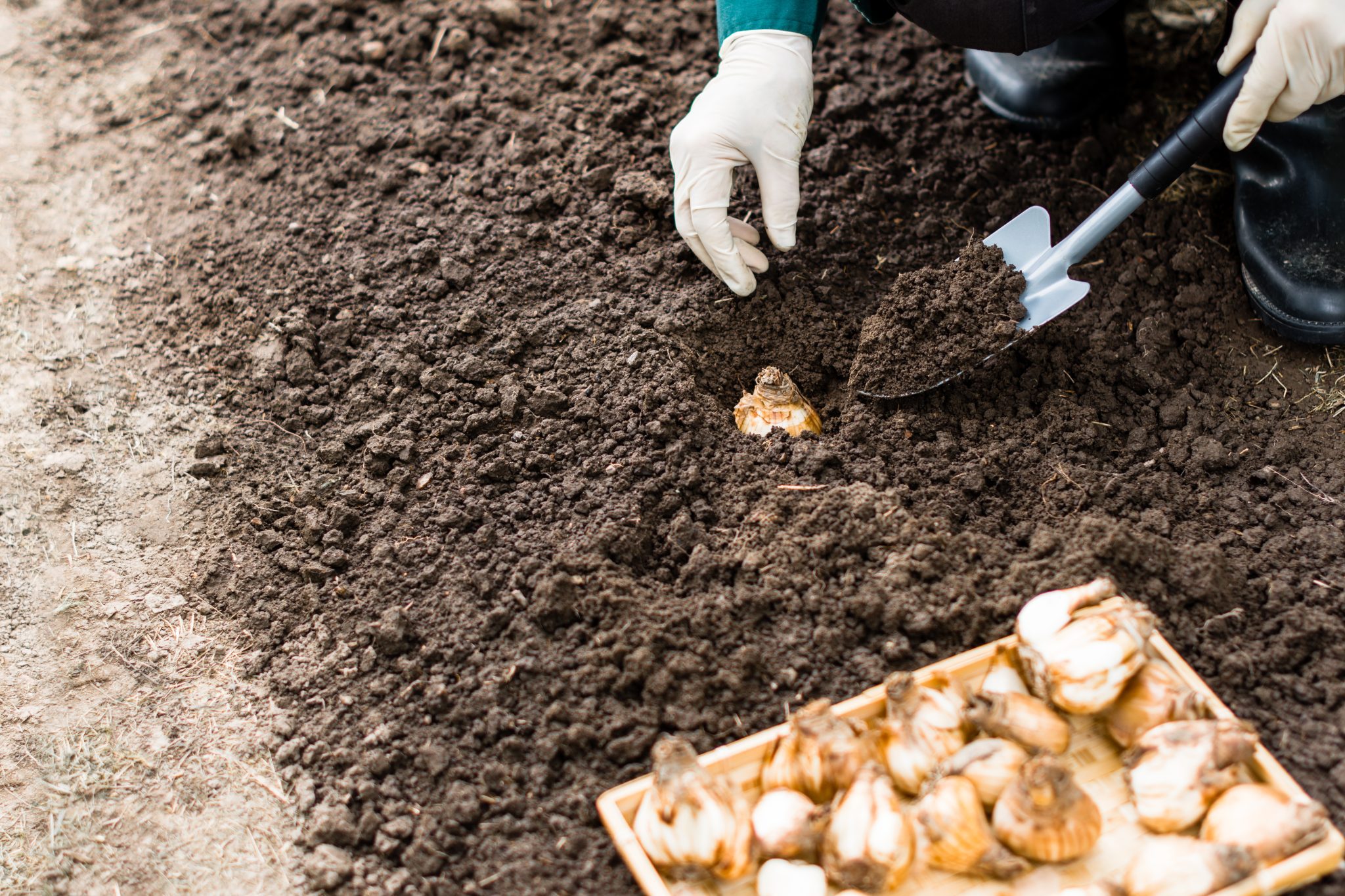Lawn & Garden

Gardeners are always planning for the next growing season. With the arrival of colder temperatures and shorter days, it can be hard to think about the warmer months of spring. But take heart fellow gardeners—a crisp fall day in November is the perfect time to get out in the garden. Between November and early December is an excellent time to plant and prepare your garden for spring bulbs.
What are bulbs?
Bulbs are a rounded underground storage organ present in some plants, notably those of the lily family. Bulbs consist of a short stem surrounded by fleshy scale leaves or leaf bases, lying dormant over winter. The term bulb can refer to true bulbs, tubers, tuberous roots, corms, or rhizomes. When planting take care to distinguish between the three because planting depth, positioning, and growth habit vary.
How should you plant bulbs?
Bulbs prefer growing in acidic, nutrient-rich and well-draining soils with full to partial sun. Wet, soggy soils can cause bulbs to rot. Therefore, it is recommended to till in organic matter such as compost, blood/bone meal, or worm castings to heavy clay soils. Even if your garden has a well-draining sandy soil, adding additional organic material will increase the soil’s ability to hold water and nutrients.
When planting bulbs, a good rule of thumb is to plant in a hole three times as deep as the size of the bulb. Plant the bulb with the narrow end, or nose, pointing up. If you are unsure of which is the top or bottom, plant the bulb on its side and it will move itself in the right direction once the bulb starts to grow in the spring. Cover planted bulbs with 2 to 3 inches of backfill soil. Then, add a mulch. Adding a pine bark mulch will help reduce soil compaction, regulate soil temperature, limit moisture loss, and prevent weeds. A good watering at planting will help settle the soil. It will also be conducive for improved root development.
Buying and Storing Bulbs
When purchasing bulbs feel for firmness and don’t remove the papery skin surrounding the bulb. Bulbs with cuts or bruises can be a sign of damage. Soft bulbs tend to indicate rot. The larger the bulb, the larger the plant. Smaller bulbs can still be purchased but may take longer to bloom and mature. If you have bulbs from a previous season, be sure to cure them prior to planting by brushing off any soil and placing in a dry, cool, dark environment away from fruits and vegetables. Bulbs can be stored several weeks prior to planting.
Bulb Recommendations for North Alabama
In north Alabama gardens, daffodils, narcissus, grape hyacinth, crocus, windflower, snowflake, squill, and snowdrops are excellent choices for early and mid-spring bulbs. For late spring and summer blooms, ornamental onions, lilies, dahlias, gladiolas, and Dutch iris can add interest to perennial borders. Tulips are always a popular bulb but be prepared to treat them as an annual. Alabama winters are not cold enough for tulips to rebloom. For best results, buy pre-chilled tulip bulbs and plant in mid-late December.

